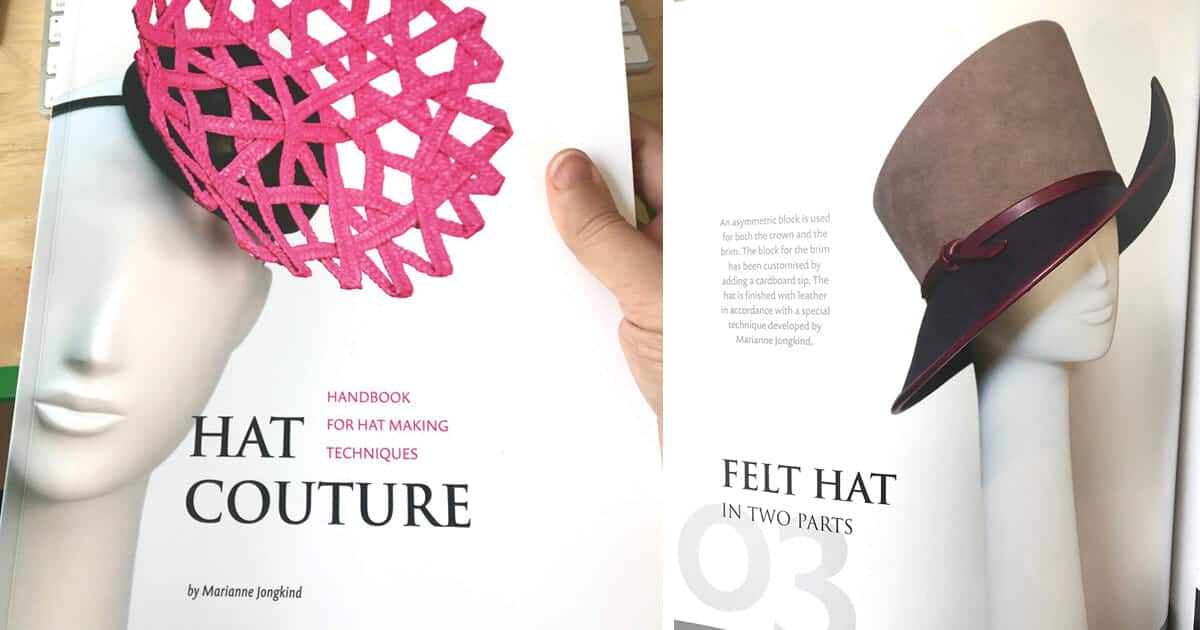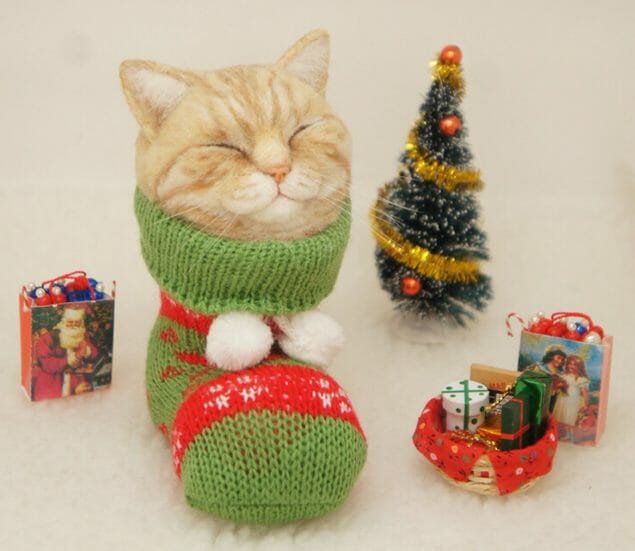
Most milliners I know have been itching to get their hands on the latest millinery book to be released: Hat Couture: Handbook for Hat Making Techniques by Marianne Jonkind.
I bought myself a copy, so let’s do a review!
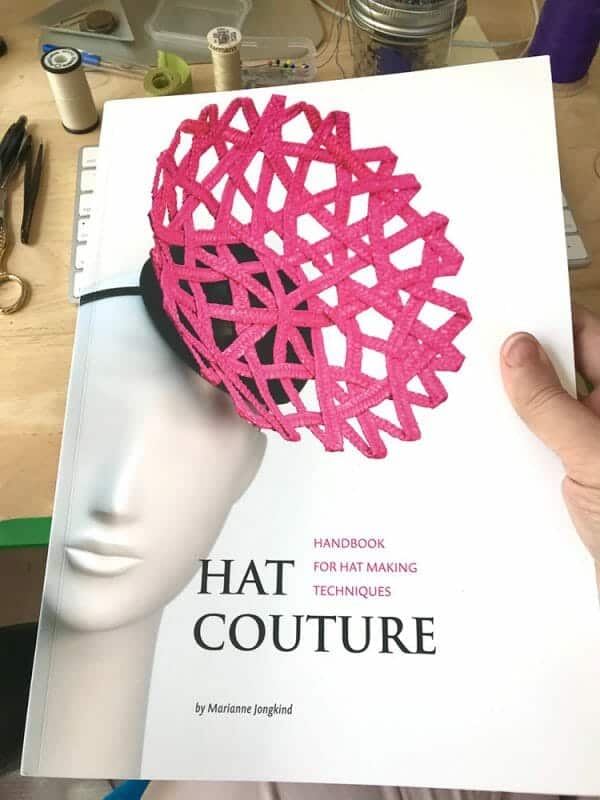
Note: I paid for my own copy and have no affiliation with the author or publisher.
I previously reviewed Millinery: The Art of Hat-Making on this blog (also non-sponsored).
Quick take:
This is possibly the best overall millinery book I’ve seen. The projects range from beginner to advanced.
For an absolute beginner, my recommendation is still Hats! by Sarah Cant (if you can find it because it seems to be out of print) because it goes into more detail on all the stitching techniques. And Millinery: The Art of Hat-Making is a better choice for projects that require limited hat blocks.
For anyone in the advanced-beginner, intermediate or even advanced level, this book is a treasure!
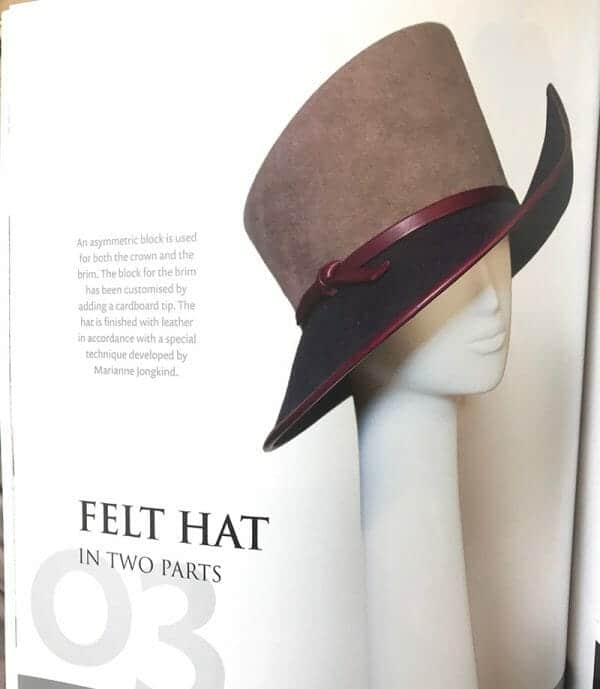
Book content and structure:
Like many other millinery books, “Hat Couture” starts with a section devoted to tools & equipment, supplies & materials and then basic (hand-sewing) stitches. Then it’s on to the official projects.
There are a whopping 22!
The projects start from the basic — a felt cloche — and progress all the way up to advanced fabric- or leather-covered blocked shapes.
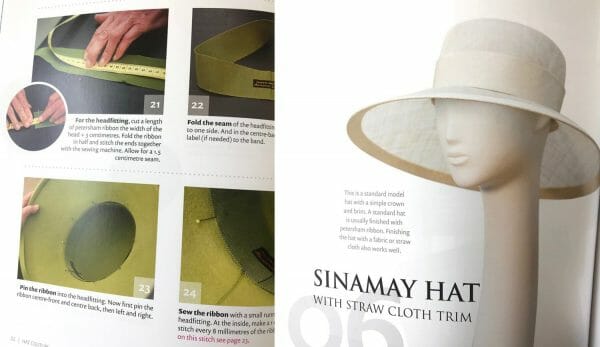
As I started looking through the book, I first thought, “Oh, this is a lot more basic than I thought it would be.” But then the projects keep on coming! And as a milliner firmly in the intermediate category, I was excited to discover lots of techniques and tips that are new to me.
I am not sure if I’ve encountered another millinery book that covers almost every style of hat: felt, flat straw (sinamay), woven straw (parasisal), straw braid, fabric-covered, etc.
There are two projects on straw braid: one made with a straw braid machine and one with a regular sewing machine. For anyone without a straw braid machine — that is, most of us — you might have to skip that project. But it’s still nice that it’s included. It’s interesting to see the technique if nothing else.
Here’s a peep at one of the more advanced projects later in the book:
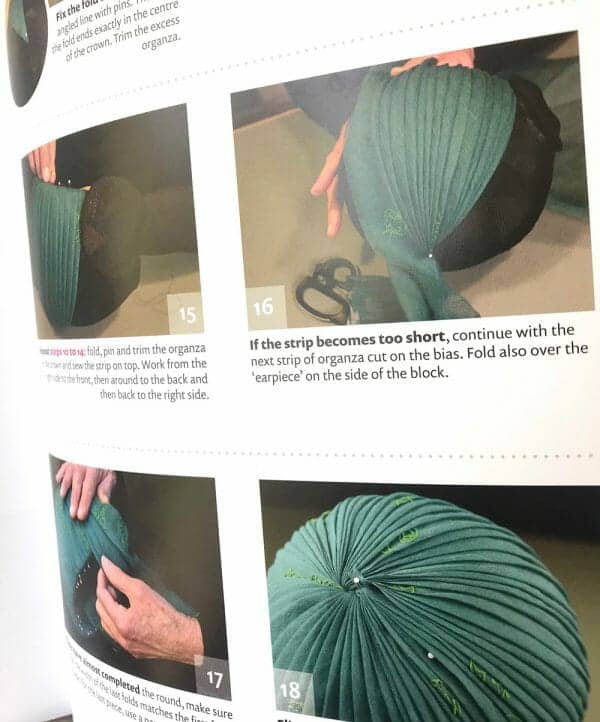
Note: I received this book this week, so I haven’t done any of the projects yet. Some of them I can skip over because they’re old hat for me. Others I might skip because I lack the equipment (straw-braid machine) or don’t have the specific materials on hand.
Want instruction on how to make a hat from a vintage racello straw hat body? There are two projects for you in this book.
Truly it’s amazing just how many types of hat-making are covered.
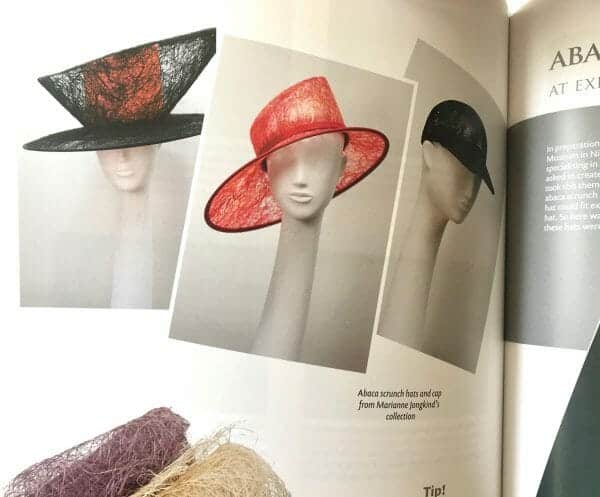
One project that has me particularly excited is the scrunch abaca.
Scrunch abaca is a flat straw fabric like sinamay. Only, instead of being woven, it’s just a flattened jumble of straw threads. I’ve seen more than one experienced milliner ask in online groups, “Hey, how are you supposed to work with this stuff?” Now we have a nice set of instructions.
To wrap up, here’s a quick rundown of the pros and cons of this book:
Pros —
- The number of projects! Every time I open the book, I see another project type that I forgot about — from a huge, dramatic sinamay hat to a felt percher made out of scraps.
- Additional techniques. A couple projects include instructions for patterning and making a “block” out of cardboard. An extremely useful technique!
- Eco-friendly stiffener. I like that this book specifically uses eco-friendly stiffener. The old-school shellac-based stiffeners are falling out of use. They can be harder to find and require a well-ventilated workspace and more drying time.
- Inspiration for projects beyond the content. I probably won’t do the projects exactly as they exist in the book. But I’m inspired to adapt them to my own personal style.
- Photography. Excellent photos. What you’d expect (and demand) from a book of this type.
Cons —
- Occasionally sparse instruction. After the overview of stitches, readers are sometimes left to their own devices to figure out the sewing.
- Glue. It’s a hotly debated issue in millinery circles. Some projects need glue. Other projects use glue where I would not (e.g. to attach a band to a crown).
- Missing crin quantity. The sinamay projects say how much is needed. The cover-image project says how much straw braid is needed. But the two crin braid projects … don’t. The width is noted. The total length is not.
- Price (kind of). Is it overpriced? Not at all. You definitely get your money’s worth with this book. That said, it is not cheap, selling for €59.
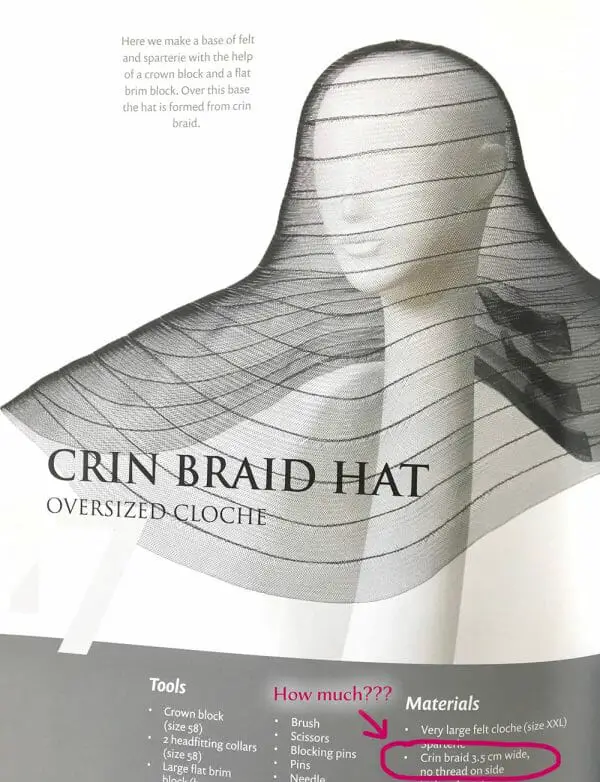
The essential details:
- Just over 200 pages.
- 22 projects.
- Available in Dutch or English.
- Published by HatMags.
- Where to get it? Online from the publisher. Multiple millinery suppliers are also stocking the book if you want to avoid the hassle/wait of international shipping.

